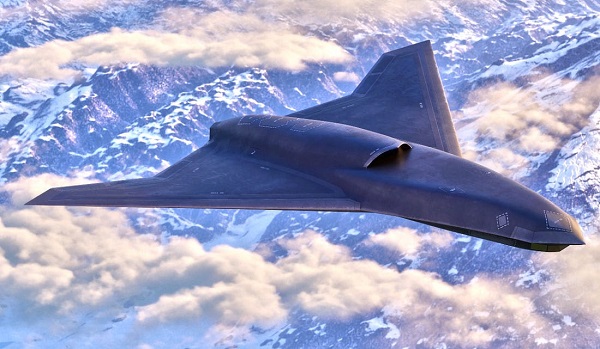armed forces
It’s time for Canada to remember, the heroes of Kapyong

“Be steady, kill and don’t give way!”
— Lieut.-Col Jim Stone’s order to his troops on the eve of battle
Korean peninsula, April 1951.
It’s spring in Korea, and things are warming up from the preceding brutal cold.
You are tired and hungry, and full of fear.
Your only friend, is a standard issue Lee-Enfield No. 4 Mk 1. A reliable bolt-action rifle in use for over a half century, and it’s got a mean kick.
But that badge on your shoulder, the Princess Patricia’s Canadian Light Infantry Regiment (2PPCLI) gives you confidence.
So does commander Lieutenant Colonel Jim Stone, a Second World War veteran.
And you are one mean mother-fucker, to put it nicely. Spoiling for a fight.
Instead, North Korean forces have been pushed across their border back into the North. It looked like an easy stint, garrison duty no less.
The thought of meeting one of those nice Korean girls wasn’t far away, and maybe having one of those weird Korean beers.
Man, was that about to change.
While gung-ho US General Douglas MacArthur repeatedly refused to heed Chinese warnings and US intelligence reports, China launched a massive surprise counteroffensive with approximately 300,000 soldiers, catching the overextended UN forces completely off guard.
MacArthur’s misjudgment was a critical error that prolonged the war for another two and a half years.
And a fellow named Hub Gray, a Canadian from Winnipeg, would end up in the maelstrom.
What was at stake? Hill 677, which controlled the entrance to the Kapyong River Valley north of Seoul. Beyond that, there was nothing, absolutely nothing, stopping the advancing communist forces from retaking Seoul.
The hill was a critical last stand.
The Aussies took it on the chin, first.
The 3rd Battalion, Royal Australian Regiment (3 RAR), bore the brunt of the initial attack and after heavy combat were forced to withdraw, with 155 casualties.
Captain Reg Saunders, the first Aboriginal Australian to be commissioned as an officer in the Australian Army, was Officer Commanding C Company, 3 RAR.
After the battle, he said: “At last I felt like an Anzac, and I imagine there were 600 others like me.”
While the Australians fought bravely, Stone ordered his Canadians, about 700 troops, to dig in on Hill 677 and prepare to repel a large brigade of massing Chinese forces, estimated at nearly 5,000-strong.
After attacking the Australians, the Chinese turned their attention to the PPCLI.
Death was on the menu, not a picnic. In waves.
The Canadians risked being wiped out. Outnumbered and outgunned.
As expected, on the night of April 22, 1951, an entire Chinese communist division swarmed them, hoping to take Seoul, only a few miles away. 2PPCLI was surrounded, and on its own.
It was a terrifying night of positions lost and retaken, hand-to-hand fighting in the dark, with bayonets, grenades, rifle butts and shovels.
Private Wayne Mitchell, despite being wounded, charged the enemy three times with his Bren gun. He earned the Distinguished Conduct Medal for his efforts.
The relentless waves of Chinese soldiers almost overran the position of D Company.
With his men securely entrenched below ground, company commander Captain J. G. W. Mills, desperate and overrun, called for an artillery strike on the position of his own 10 Platoon — what the Americans called “Broken Arrow.”
He relayed the request from Lieutenant Mike Levy, who was hunkered down with his men in shallow foxholes on the hill.
A battery of New Zealander guns obliged, firing 2,300 rounds of shells in less than an hour, destroying the Chinese forces on that position.
Though the barrage landed just metres from Levy’s position, he and his men were unscathed.
“I remember sitting down there in that trench one time during that fight and I was shaking and I was thinking, ‘What the f–k are doing here, you dumb shit?”‘ said Ernie Seronik, a member of the 2PPCLI’s D Company.
“You really can’t tell people about it, can’t describe it. You can’t know what it’s like until you’re there, the fear you have, and it stays with you. I was scared all the time.”
“When you sit in the dark and are looking for and waiting for them to appear, every stump that is out there is a person, the enemy,” recalled Seronik.
“At that time, the real terror comes from not knowing what’s going to happen to you. At any time a bullet can come out of nowhere and you’re dead. It happened a lot.”
At one point, a Chinese officer yelled, “Kill the American pigs,” in Chinese.
Levy, a platoon commander who understood the dialect, yelled back:
“We are Canadian soldiers, we have lots of Canadian soldiers here.”
Desperate, the Chinese attacked battalion headquarters from the rear. Hoping to break the Canadian lines.
If HQ fell, the Canadians would be driven off the hill and the road to Seoul would be open. It did not fall, in part thanks to Hub Gray.
He was in charge of a small mortar-machine gun unit. Coming at them: about 500 battle-hardened Chinese.
With the enemy almost on top of them, Gray’s men opened fire, the Chinese attack stalled, and then fell apart, described by one Canadian as “like kicking the top off an ant hill.”
Through it all, Stone refused to allow his men to withdraw, as he believed the hill was a critical strategic point on the UN front. He was right, it was.
Veteran David Crook, remembered the battle all too well.
“From sheer boredom to sheer terror. At times it didn’t stop. And then you’d get lulls where the enemy would be regrouping for another attack so we’d get a bit of a breather to think a little bit. But, most times it was just non-stop,” he said.
While they defended the hill, the Canadians were cut off and had to be supplied via air drop.
As Canadian soldier Gerald Gowing remembered: “We were surrounded on the hills of Kapyong and there was a lot of fire. We were pretty well out of ammunition and out of food too. We did get some air supplies dropped in, but we were actually surrounded… that was a scary moment, let me tell you.”
The Canadians were down to their last bullets when the Chinese advance finally broke. Hub’s machine guns had saved HQ.
Kapyong did not fall. Nor did Seoul. The Canadians held firm their positions.
The 2PPCLI were eventually relieved on the front line by a battalion of the 1st US Cavalry Division.
The battle contributed significantly to the defeat of the Chinese offensive, protecting the capital city of Seoul from re-occupation, and plugging the hole in the UN line to give the South Koreans time to retreat.
Both the Canadians and the Australians received the United States Presidential Unit Citation from the American government.
Five men in other units were (rightly) decorated for bravery that night. Hub Gray was not among them.
Levy wasn’t recognized for his bravery until 2003, when Governor General Adrienne Clarkson granted him a coat of arms.
In later years Hub Gray wrote his own account of Kapyong (Beyond the Danger Close) with a vivid account of the fighting, but made no mention at all of his own vital role. You’d scarcely know he was there.
But he was. A true Canadian hero. Along with all the rest.
Every child/student in Canada, should know their names, and what they did.
Hubert Archibald Gray known as “Hub” to all his friends, passed away peacefully in his sleep on Nov. 9, 2018, in Calgary, with family at his bedside. He was 90.
— with files, from the National Post
If you enjoyed this post, you can tell THE MAKICHUK REPORT that their writing is valuable by pledging a future subscription.
armed forces
Underfunded and undermanned, Canada’s Reserves are facing a crisis

The Macdonald Laurier Institute
By J.L. Granatstein for Inside Policy
With the new threats facing Canada and NATO, change must come quickly: Canada needs to fix the Army Reserves.
Canada’s once-proud Reserves force is fading fast – and without urgent action, it risks becoming irrelevant.
The Canadian Armed Forces Primary Reserves have an authorized strength of 30,000, but the present numbers of the Army, Navy and Air Force Reserves as of November 2024 are only 22,024. The RCN Reserves number 3,045, the RCAF 2,162, and the Army 16,817. This is frankly pathetic, all the more so as the regular forces are sadly understrength as well.
The Army Reserves have a long history, with some units dating back before Confederation. Before both world wars the Militia’s strength was roughly 50,000, generated by populations of eight million in 1914 and eleven million in 1939. Amazingly, despite a lack of training and equipment, the Militia provided many of the Army’s officers, up to and including successful division and regimental commanders, and large numbers of the senior non-commissioned officers. A century ago, even after some consolidation following the Great War, almost every town and city had an armoury and a Militia unit with a cadre of officers, good numbers of enlisted men, and some social status in their community. The factory owners, bankers, and well-off were heavily represented, and the Militia had real clout with representation in Parliament and easy access to the defence minister.
Not any longer. The armouries in most of Canada have disappeared, sold off by governments and levelled by developers, and those that still stand are in serious need of maintenance. The local elites – except for honorary colonels who donate funds for extra kit, travel, celebratory volumes, and to try to stop Ottawa from killing their regiment – are noticeably absent.
So too are the working men and women and students. As a result, there are Army Reserve units commanded by a lieutenant-colonel with three majors, half a dozen captains, ten lieutenants, a regimental sergeant major and any number of warrant officers, and under seventy in the ranks. It is a rare Reserve regiment, even those in Canada’s largest cities, which has a strength above 200, and ordinarily when a unit trains on a weeknight or a weekend only half that number turn up. Even in summer, when reservists do their serious training at Petawawa or other large bases, there will be many absentees.
And when a unit is asked to raise soldiers for an overseas posting – say for the Canadian-led brigade in Latvia – it might be able to find ten or so volunteers, but it will be highly unlikely to be able to do so when the next call comes. Reservists have families, jobs or school classes, and few are able and willing to go overseas and even fewer to do so for subsequent deployments.
Without reservists filling the ranks (and even with them providing up to 20 per cent of a battalion’s strength), the undermanned regulars must cobble together a battalion of 600 or so by seconding troops from another Regular unit. After being brought up to Regular force standards before deployment, the reservists have performed well in operations, for example, in Afghanistan.
So why can’t the Army Reserves find the men and women to join their ranks? The reasons are many and much the same as the recruitment difficulties facing the Regular Army. Sexual harassment cases have abounded, affecting the highest ranks and the lowest. Modern equipment has been and is continuing to be lacking.
Procurement is still bogged down with process, paperwork, and long timelines – for instance, approving a new pistol took a decade. And the Reserves get modern equipment only after the Regulars’ needs are met, which unfortunately means never. Instead of a tank or a Light Armoured Vehicle, units get pickup vehicles painted in dark green and see anything more only on their rare days of training in the field.
Leaders of the Reserves have called for a separate budget for years, demanding that they decide how the funds are allocated. National Defence Headquarters has refused, rightly claiming that the underfunded Regulars have higher priority. But the Reserves point to official documents that in 2019-20 demonstrated that of $3.018 million allocated to the Reserves, only $1.3 billion reached them, the rest being unspent or re-allocated to the Regulars.
With some reason this infuriates Reservists who point to this happening every fiscal year.
So too does what they see as the condescension with which they are treated. A Reserve major is equal in rank to a Regular major, but both know that the Regular is almost always far better trained and experienced for his job and that rankles. (Many years ago, when I was a junior officer, I remember another Regular referring to “the ****ing Militia.” I know that Reserve officers reverse the compliment.)

Today with unemployment above nine per cent and with young Canadians’ unemployment rate even higher, the Reserves pay a new private a daily rate of some $125 (The Carney government recently promised a substantial pay raise). This ought to be a good option to earn some money. The Toronto Scottish, an old and established infantry unit, for example, has a website that lists other benefits: up to $8,000 for educational expenses and up to $16,000 for full-time summer employment. The Toronto Scottish has two armouries in the western suburbs, a female Commanding Officer, but under 200 soldiers. There should be a real opportunity in the current circumstances to increase those numbers by a good advertising campaign pitched directly at young men and women in the Toronto suburbs. The same can be said for every big city.
But the small town and rural units, tiny regiments whatever their storied histories, are unlikely to be able to grow very much. National Defence Headquarters needs to set a number – say 150, 200, or 250 – above which a unit will keep its command structure. Below that standard, however, units will be stripped of their higher ranks and effectively consolidated under the Reserve brigade in their area.
Reservists have fought such suggestions for years, but if the Reserves are to become an efficient and effective force, this is a change that must come. One such experiment has combined the Princess of Wales Own Regiment in Kingston, Ontario, and the Brockville Rifles by putting the Commanding Officer of the first and the Regimental Sergeant Major of the second in charge. Unit badges can remain, but this reduces the inflated command staffs.
In reality, these small regiments are nothing more than company-sized sub-units, and sub-units of less than a hundred simply cannot train effectively or draw enough new members from their small town and rural catchment areas. Combined they can function effectively.
The federal government will soon release an army modernization plan. Change is always difficult but with the new threats facing Canada and NATO, change must come quickly. Canada needs to fix the Army Reserves.
Historian J.L. Granatstein is a member of the Macdonald-Laurier Institute’s Research Advisory Board. A bestselling author, Granatstein was the director and CEO of the Canadian War Museum. In 1995, he served on the Special Commission on the Restructuring of the Reserves.
armed forces
Secretive Lockheed Martin Skunk Works reveals latest high-tech military drone

 THE MAKICHUK REPORT
THE MAKICHUK REPORT
Unmanned Vectis to ride shotgun with next-gen fighters
When Lockheed Martin’s super secret Skunk Works© advanced development arm unveils a new project, the aviation world stops and listens.
As always, it is very hush-hush, and, quite often, groundbreaking.
This week’s announcement didn’t disappoint.
It’s called “Vectis” — a stealthy autonomous drone that Lockheed intends to fly by the end of 2027.
As with most Skunk Works projects, officials declined to comment on certain aspects of the aircraft’s design, such as its engine or top speed, though it was noted that Lockheed’s analysis “doesn’t point toward supersonic [speeds]” as a requirement.
What do we know about it, aside from it’s very cool, futuristic design?
The first Vectis prototype is currently “in progress,” and is envisioned as a large “Category 5” reusable drone designed to be customizable to match shifts in the threat environment, said OJ Sanchez, Skunk Works’s vice president and general manager.
“Vectis provides best-in-class survivability at the CCA [Collaborative Combat Aircraft] price point,” Sanchez told reporters ahead of the Air Force Association’s Air Space and Cyber conference in Washington, D.C. “Prototype parts are ordered, the team is in work, and we intend to fly in the next two years.”
According to Breaking Defense, Lockheed sees the range, endurance and flexibility of Vectis’s design as key to its appeal.
It is being developed for the US and international markets based on feedback from multiple customers about the future battlefield.
One has to only look at the Russia-Ukraine conflict, to see that things have changed.
Vectis can carry out mission sets ranging from air-to-air, air-to-ground and ISR, and has an open systems architecture allowing it to interface with platforms and mission systems not built by Lockheed Martin, Breaking Defense, reported.
Certain aspects of the drone — such as which payloads it can carry, or whether it is optimized for regular operations or used less frequently on deployments — can be fine-tuned to meet a customer’s specific requirements.
For instance, “we will have built into it the ability for it to be a daily flyer, reliably work alongside its crew teammates, to be able to integrate into operations for training, as well as for deployment,” Sanchez said.
“At the same time, if the requirement is ease of storage and ease of assembly, it’s absolutely built into the design. … That’s where we’ll work closely to listen with any individual customers and go from there on their operations choice, but the flexibility is built in.”
With the lessons of Ukraine in mind, Vectis is designed to be maintainable in a deployed environment, with a simple design made of “and durable, reliable materials” and easy access to the aircraft’s internal systems if repairs need to be made.
While it has not flown, Lockheed has conducted operational analysis and simulations that paired the drone with the F-22 and F-35, with Sanchez noting that its low-observable signature and communications gear are “compatible” with fifth- and sixth-generation aircraft.
It was also informed by previous experience designing tailless aircraft like the X-44 MANTA, Lockheed’s sixth-generation fighter prototype for the Air Force’s Next Generational Air Dominance program, Sanchez said.
“We’re building in that kind of autonomy, that flexible autonomy, if you will, so that we can work with more countries, more partners, to really listen to what their needs are,” he said.
“That flexibility has been demonstrated through multiple demonstrations. Now we’ll go out and build it, and we’ll work to prove in the open air.”
In the U.S. military’s parlance, Group 5 uncrewed aerial systems are the largest and most capable, covering anything pilotless with a maximum takeoff weight of 1,320 pounds or more, and that can fly at altitudes of 18,000 feet or higher.
When asked, Sanchez declined to offer any hard dimensions or other specifications for Vectis. He did say it was smaller than a Lockheed Martin F-16 fighter, but larger than one of the company’s Common Multi-Mission Truck (CMMT, pronounced ‘comet’) missile-like drones, which is a very broad size range.
According to experts at TWZ.com, renderings of Vectis from Skunk Works show a tailless drone with a lambda wing planform and a top-mounted air intake.
There is a pronounced chine line around the forward end of the fuselage and a shovel-like shape to the nose, as well as various conformal antennas and/or sensor apertures, all of which are indicative of low-observable (stealthy) design considerations.
A short promotional video also includes a cutaway view showing an S-shaped duct behind the air intake and exhaust shrouding, features that offer further radar cross-section and infrared signature reducing benefits.
Vectis’ core planform is interestingly reminiscent, in some broad strokes, of a rendering of a stealthy aerial refueling tanker concept Skunk Works first showed publicly last year.
That aircraft had a much larger design, in line with its intended mission, with large clipped wings that had some lambda-wing attributes, as well as small outwardly-canted twin vertical tails.
There has been something of an uptick in recent years in new crewed and uncrewed tactical aircraft designs with lambda or at least lambda-like planforms.
This includes one of the several air combat drone designs that emerged around a massive military parade in China earlier this month, as well as one of the two Chinese next-generation crewed combat jets that broke cover in December 2024.
Vectis also has “endurance ranges compatible with Indo-Pacific, European, and CENTCOM [U.S. Central Command] theaters,” according to a Lockheed Martin press release.
What munitions and other payloads Vectis might be able to carry is unclear. Skunk Works’ Sanchez mentioned “reusable or flexible payloads,” but did not elaborate.
The promotional video shows a vignette in which the drones, operating together with an F-22, use unspecified sensors to spot and track aerial threats before being ordered to fire air-to-air missiles, presumably from internal bays, at those targets.
Electronic warfare suites and signal relay packages might also be among the payload options for Vectis drones.
Sanchez did not provide any hard cost metrics for Vectis. The Air Force has said in the past that it is aiming for a unit cost roughly in the US$20 million range for drones being developed under the first phase, or Increment 1, of its CCA program.
In discussing how Vectis could be adaptable to multiple U.S. and foreign operator requirements, Sanchez also spoke in more detail about the drone’s current dependence on traditional runways, as well as its ability to operate from more austere locations.
“Our analysis aligns with the U.S. Air Force, that runway accessibility is incredibly important in every theatre, particularly in INDOPACOM [the U.S. Indo-Pacific Command area of responsibility]. So we’re very intentional about the flexibility that this system would enable in the theaters of interest,” Sanchez explained.
“And so the amount of runways that will be available, the amount of flexibility to implement, whether it be an Agile Combat Employment approach, or a hub and spoke for other countries, depending on how it is, Vectis will be very capable in those spaces.”
Exactly how Skunk Works envisions the Vectis will handle counter-drone weapons, such as Israel’s Iron Dome, Iron Beam, or David’s Sling, remains uncertain.
THE MAKICHUK REPORT is free today.
You can tell THE MAKICHUK REPORT that their writing is valuable by pledging a future subscription.
You won’t be charged unless they enable payments.
-

 Justice2 days ago
Justice2 days agoCarney government lets Supreme Court decision stand despite outrage over child porn ruling
-

 COVID-192 days ago
COVID-192 days agoFreedom Convoy leader Tamara Lich to appeal her recent conviction
-

 Daily Caller2 days ago
Daily Caller2 days agoUS Eating Canada’s Lunch While Liberals Stall – Trump Admin Announces Record-Shattering Energy Report
-

 Business2 days ago
Business2 days agoCarney’s budget spares tax status of Canadian churches, pro-life groups after backlash
-

 Daily Caller1 day ago
Daily Caller1 day agoUN Chief Rages Against Dying Of Climate Alarm Light
-

 Business2 days ago
Business2 days agoThe Liberal budget is a massive FAILURE: Former Liberal Cabinet Member Dan McTeague
-

 Business1 day ago
Business1 day agoU.S. Supreme Court frosty on Trump’s tariff power as world watches
-

 Business19 hours ago
Business19 hours agoCarney budget continues misguided ‘Build Canada Homes’ approach


















